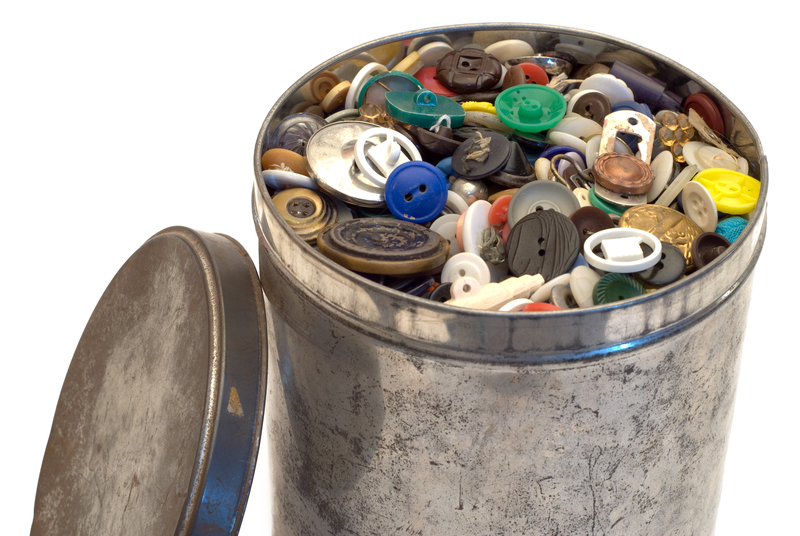Navigating Hazardous Waste Identification: A Comprehensive Guide
In today's rapidly evolving industrial landscape, the ability to navigate hazardous waste identification effectively is crucial. It is not only a regulatory necessity but also an important aspect of environmental stewardship and public health protection. From laboratories and hospitals to manufacturing plants and construction sites, understanding hazardous waste fundamentals and best identification practices plays a pivotal role in compliance and sustainability.

What is Hazardous Waste?
Hazardous waste refers to waste materials that pose substantial or potential threats to public health or the environment. It is characterized by certain physical or chemical properties, such as toxicity, reactivity, ignitability, or corrosivity. Identifying such waste is the first critical step in managing it responsibly.
Common Sources of Hazardous Waste
- Industrial facilities (chemical manufacturing, metal processing)
- Medical institutions (hospitals, clinics, research labs)
- Construction and demolition sites
- Households (batteries, pesticides, paints, cleaners)
- Agricultural activities (pesticides, fertilizers, solvents)
The Importance of Accurate Hazardous Waste Identification
Failure to properly identify hazardous waste can lead to serious environmental, legal, and financial consequences. Proper classification enables safe handling, storage, transportation, and disposal, preventing harm to people and the environment. It's also essential for compliance with regulations such as the Resource Conservation and Recovery Act (RCRA) in the United States or similar legislation in other countries.
The Impacts of Incorrect Waste Identification
- Fines and Penalties: Regulatory fines can be severe for improper labeling or disposal.
- Environmental Harm: Pollutants can contaminate soil, air, and water.
- Public Health Risks: Exposure to dangerous substances can cause illnesses.
- Liability Issues: Companies may face cleanup costs and legal actions.
Key Steps in Navigating Hazardous Waste Identification
Navigating the hazardous waste identification process involves several critical steps. Below, we outline the major phases involved in this complex, but essential, procedure:
1. Waste Characterization
The initial step in identifying hazardous waste is characterizing the waste material. This involves collecting data on the source, composition, and properties of the waste.
- Source Identification: Understand the origin and processes that generate the waste.
- Chemical and Physical Analysis: Test for properties such as pH, flashpoint, reactivity, toxicity, and composition.
- Documentation: Record all findings in lab results, safety data sheets (SDS), and process logs.
2. Reviewing Regulatory Definitions
Waste must be evaluated against official regulatory definitions. In the United States, the Environmental Protection Agency (EPA) provides a clear framework for hazardous waste identification through the RCRA, dividing waste into listed and characteristic wastes.
- Listed Wastes: Wastes specifically listed by regulators due to their risks (e.g., F-list, K-list, P-list, U-list in the US EPA rules).
- Characteristic Wastes: Wastes that exhibit hazardous traits such as ignitability, corrosivity, reactivity, or toxicity.
3. Applying the Exclusion Criteria
Sometimes, waste materials can be excluded from hazardous waste regulation under specific conditions. Check for exclusions and exemptions which may apply under federal, state, or local rules, such as:
- Certain used oil managed for recycling
- Household hazardous waste collected in designated programs
- Materials reclaimed in closed-loop processes
4. Assigning Hazardous Waste Codes
Properly identified hazardous wastes must be assigned waste codes (such as EPA hazardous waste numbers) for tracking, reporting, and compliance. These codes enable authorities and disposal facilities to understand the risks and manage the wastes responsibly.
5. Documentation and Recordkeeping
Meticulous documentation is an essential part of navigating hazardous waste identification:
- Maintain all analysis records, test results, SDS, and regulatory determinations for a minimum period (often three years or more, depending on jurisdiction).
- Ensure all containers, storage sites, and transport manifests are correctly labeled with IDs and codes.
Understanding the Four Main Hazardous Waste Characteristics
A foundational knowledge for successful hazardous waste identification is familiarity with the four main characteristics used by regulatory agencies. Here's a breakdown:
- Ignitability: Wastes that can easily catch fire, such as solvents, oils, or fuels. They generally have a flash point below 140?F (60?C).
- Corrosivity: Wastes that are acids or bases with extreme pH (<2 or >12.5) or capable of corroding metals.
- Reactivity: Substances that are unstable, explosive, or react dangerously with water or other materials.
- Toxicity: Wastes with chemicals that can leach into groundwater and harm living organisms, such as mercury, lead, or pesticides.
Testing for Hazardous Waste Properties
Laboratory testing and analytical methods are used to determine if waste materials exhibit these hazardous traits. Standardized procedures ensure consistency in hazardous waste determination and help maintain regulatory compliance.
Regulations Governing Hazardous Waste Identification
Properly identifying hazardous waste requires a thorough understanding of local, national, and sometimes international regulations. The following frameworks are especially relevant:
- Resource Conservation and Recovery Act (RCRA, USA): The central statute regulating the generation, transport, treatment, and disposal of hazardous wastes.
- Basel Convention: International treaty governing the transboundary movement of hazardous wastes and their disposal.
- State and Local Regulations: Many states and municipalities enforce more stringent rules than those at the federal level.
*Note: Always stay updated with changing regulations, as hazardous waste identification rules can evolve over time.*
Best Practices for Navigating Hazardous Waste Identification
- Invest in Staff Training: Regularly train employees in hazardous waste identification and safe handling procedures.
- Use Reliable Lab Analysis: Employ certified laboratories using recognized test methods (e.g., SW-846).
- Maintain Accurate Records: Keep up-to-date reports and logs to support compliance and inspections.
- Engage Qualified Consultants: When in doubt, consult environmental professionals or hazardous waste experts.
- Implement Segregation Protocols: Store and handle hazardous wastes separately to prevent cross-contamination.
- Document Chain of Custody: Track waste from point of generation to final disposal.
- Conduct Routine Audits: Periodically review waste streams and identification practices for continual improvement.
Common Mistakes in Hazardous Waste Identification
- Neglecting Small Quantities: Even small amounts of hazardous waste must be properly identified and managed.
- Assuming Safety of Unlabeled Wastes: If the composition is unknown, treat it as potentially hazardous until proven otherwise.
- Overlooking Secondary Waste Streams: Wastewater, residues, and spent materials can also be hazardous.
Technological Tools Aiding Hazardous Waste Identification
Modern technology is revolutionizing the process of hazardous waste identification. Digital tools and analytical equipment improve speed, accuracy, and traceability:
- LIMS (Laboratory Information Management Systems): For managing test data and reporting results.
- Mobile Waste Tracking Apps: Assist in real-time waste tagging and documentation.
- Portable Analytical Devices: Field-testing devices allow rapid, on-site determination of hazardous characteristics.
- Barcode and RFID Systems: Streamline inventory and manifest management.

Environmental and Social Responsibility in Hazardous Waste Identification
Beyond compliance, effective hazardous waste identification is an element of broader corporate responsibility. Transparent, science-based waste management protects not only your organization's reputation but also the communities you serve and the planet as a whole.
Organizations that embrace proactive waste identification are better prepared to minimize risks, unlock recycling opportunities, and contribute to a circular economy.
Benefits of Responsible Hazardous Waste Management
- Risk Reduction: Lower chances of spills, accidents, and environmental releases.
- Resource Recovery: More materials can be recycled or reclaimed when properly identified.
- Enhanced Sustainability: Supports green business practices and can improve stakeholder trust.
Conclusion: Mastering the Art of Hazardous Waste Identification
In summary, navigating hazardous waste identification is an essential skill for businesses and institutions of every type and size. By systematically characterizing, classifying, and documenting waste streams, organizations not only remain compliant but also uphold their commitment to health, safety, and environmental preservation.
- Stay informed of regulatory changes and best practices.
- Regularly review your hazardous waste identification procedures.
- Invest in ongoing staff education and accurate testing.
In a world increasingly focused on sustainability and risk management, mastering hazardous waste identification is vital. By following the strategies outlined above, you can navigate the complexities of hazardous waste classification with confidence, competence, and environmental conscience.
For further learning, consult resources such as your environmental regulator's official guidelines and seek guidance from experienced hazardous waste professionals. The safety of our planet--and your organization--depends on it.